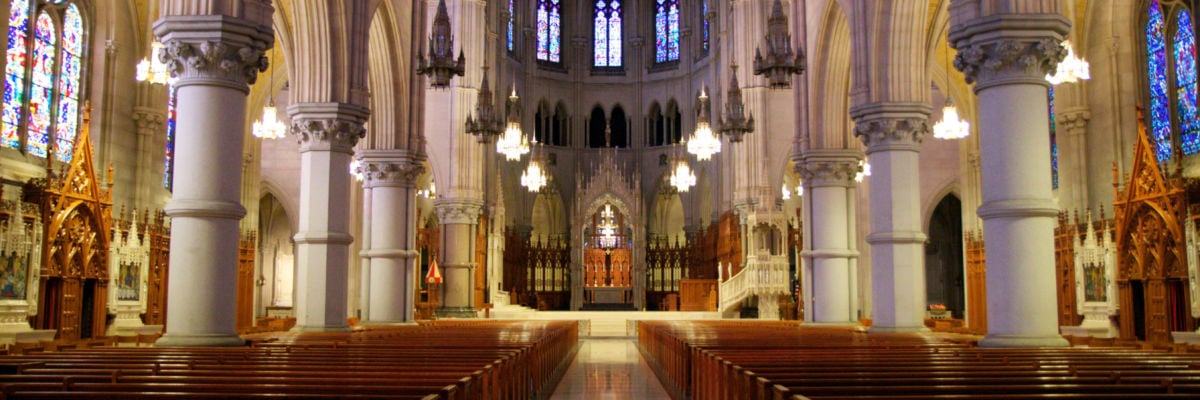
On July 16, Pope Francis released a new document regulating the celebration of the pre-Vatican II liturgy.
The document is titled Traditionis Custodes (Latin, “Guardians of the Tradition”), and it narrows the situations in which the traditional Latin liturgy is permitted.
There is much more to say about the document than can be covered here, but this will be an overview of some of the key points that have the most immediate impact.
Under the provisions of Benedict XVI’s 2007 document Summorum Pontificum, the individual priest was the primary decision-maker concerning when Mass would be celebrated according to the older form. Under the new document, the bishop has this responsibility.
Although rumors had been circulating that Pope Francis was likely to release a new document narrowing the situations in which the older liturgy could be celebrated, the document came more quickly than many suspected and took a large number by surprise. Reactions were quick in coming, with many on the internet expressing shock and outrage.
To correctly understand the document, it is important to get the facts and to try to understand why the pope made the decisions he did. A good starting point is reading the motu proprio itself.
To start with, although there are not as many opportunities to celebrate the traditional liturgy as when every individual priest could decide to perform it, there is no sudden end to its celebration. Instead, bishops whose dioceses have groups of faithful for whom the 1962 liturgy is celebrated are “to designate one or more locations where the faithful adherents of these groups may gather for the eucharistic celebration” according to the older form. In these “celebrations,” the document prescribes, “the readings”—presumably the single epistle reading, often but not always taken from the apostles’ New Testament letters, and the Gospel reading—“are proclaimed in the vernacular language, using translations of the Sacred Scripture approved for liturgical use by the respective Episcopal Conferences.”
The new locations specified in Traditionis Custodes aren’t to be in ordinary parish churches, but they may be in “personal parishes” already erected for this purpose. Although no new personal parishes are to be erected, the existing ones have not been suppressed (though it is up to the bishop whether to continue them).
Bishops in dioceses with the traditional liturgy also are directed “to appoint a priest who, as delegate of the bishop, is entrusted with these celebrations and with the pastoral care of these groups of the faithful. . . . This priest should have at heart not only the correct celebration of the liturgy, but also the pastoral and spiritual care of the faithful.”
The pope is thus not stopping the celebration of the traditional liturgy, but mandating a space for it separate from the parish churches and addressing the pastoral care of the faithful who prefer it.
There are other details to the current regulations, but these are the ones that have the most immediate impact on the ordinary faithful who prefer the traditional liturgy.
When it comes to understanding the pope’s reasoning behind these decisions, the best source of information is a letter that Pope Francis wrote to the world’s bishops explaining them. When reading the letter, we should remember the Catechism’s exhortation: “To avoid rash judgment, everyone should be careful to interpret insofar as possible his neighbor’s thoughts, words, and deeds in a favorable way” (2478).
In the letter, the pope seeks to enter the minds of his two predecessors, John Paul II and Benedict XVI, as well as the minds of those who are disappointed with poorly celebrated liturgies.
He writes: “I am saddened by abuses in the celebration of the liturgy on all sides. In common with Benedict XVI, I deplore the fact that ‘in many places the prescriptions of the new missal are not observed in celebration, but indeed come to be interpreted as an authorization for or even a requirement of creativity, which leads to almost unbearable distortions.’”
Francis notes that the bishops must “provide for the good of those who are rooted in the previous form of celebration and need to return in due time to the Roman Rite promulgated by Saints Paul VI and John Paul II.” In prescribing how to go about this, he concludes by asking the bishops “to be vigilant in ensuring that every liturgy be celebrated with decorum and fidelity to the liturgical books promulgated after Vatican Council II, without the eccentricities that can easily degenerate into abuses. Seminarians and new priests should be formed in the faithful observance of the prescriptions of the Missal and liturgical books.”
The pontiff traces the origin of Traditionis Custodes to a survey the Congregation for the Doctrine of the Faith conducted of the world’s bishops to ask how successfully Summorum Pontificum was being implemented in their dioceses.
He writes, “The responses reveal a situation that preoccupies and saddens me, and persuades me of the need to intervene. Regrettably, the pastoral objective of my predecessors, who had intended ‘to do everything possible to ensure that all those who truly possessed the desire for unity would find it possible to remain in this unity or to rediscover it anew,’ has often been seriously disregarded. An opportunity offered by St. John Paul II and, with even greater magnanimity, by Benedict XVI . . . was exploited to widen the gaps, reinforce the divergences, and encourage disagreements that injure the Church, block her path, and expose her to the peril of division.”
Specifically, the pope claims in his letter, attitudes had developed that were “often characterized by a rejection not only of the liturgical reform, but of the Vatican Council II itself, claiming, with unfounded and unsustainable assertions, that it betrayed the Tradition and the ‘true Church.’”
The extent to which these attitudes are present among attendees of the traditional liturgy can be debated. Nevertheless, the pope says he felt it necessary to intervene with the new regulations, lest these attitudes continue to grow and divisions in the body of Christ become even worse. The motu proprio thus directs local bishops with groups that celebrate the traditional liturgy “to determine that these groups do not deny the validity and the legitimacy of the liturgical reform, dictated by Vatican Council II and the magisterium of the supreme pontiffs.”
It should be borne in mind that each of the recent pontificates has seen significant shifts on the role of the traditional liturgy in the life of the Church. This is likely to continue in the future, and future popes may again choose to broaden the circumstances under which the traditional liturgy is permitted.



